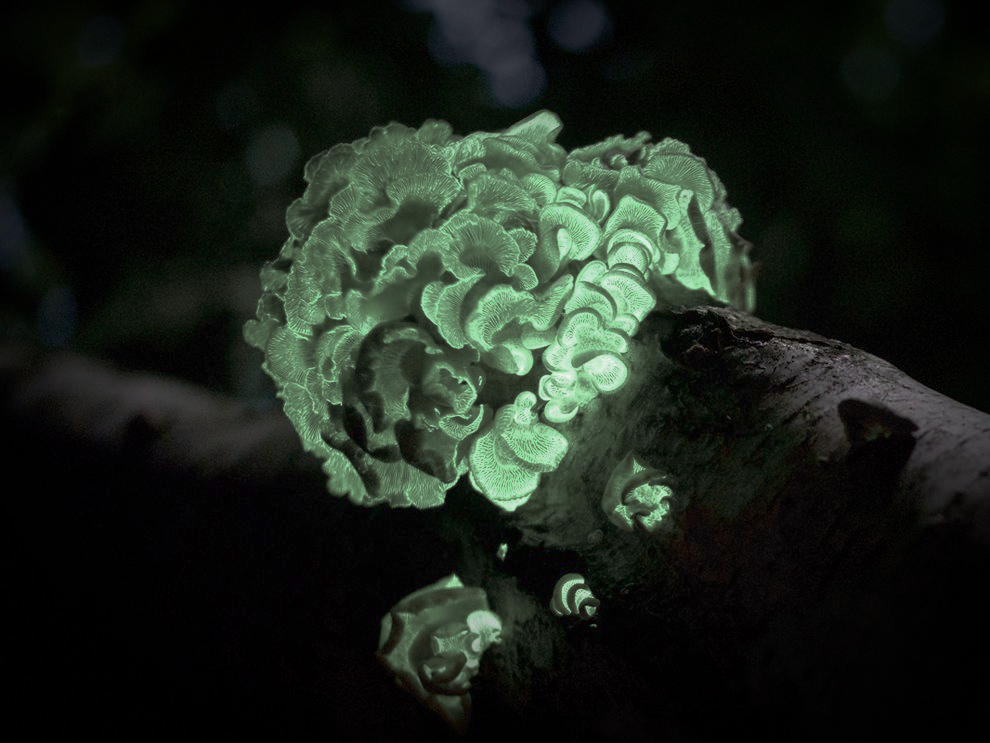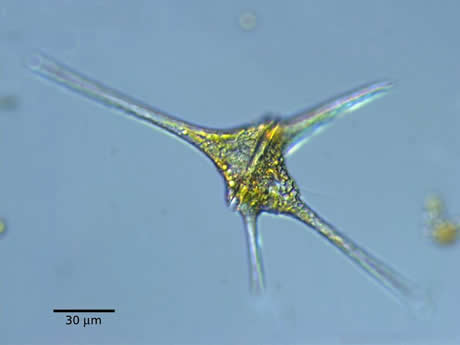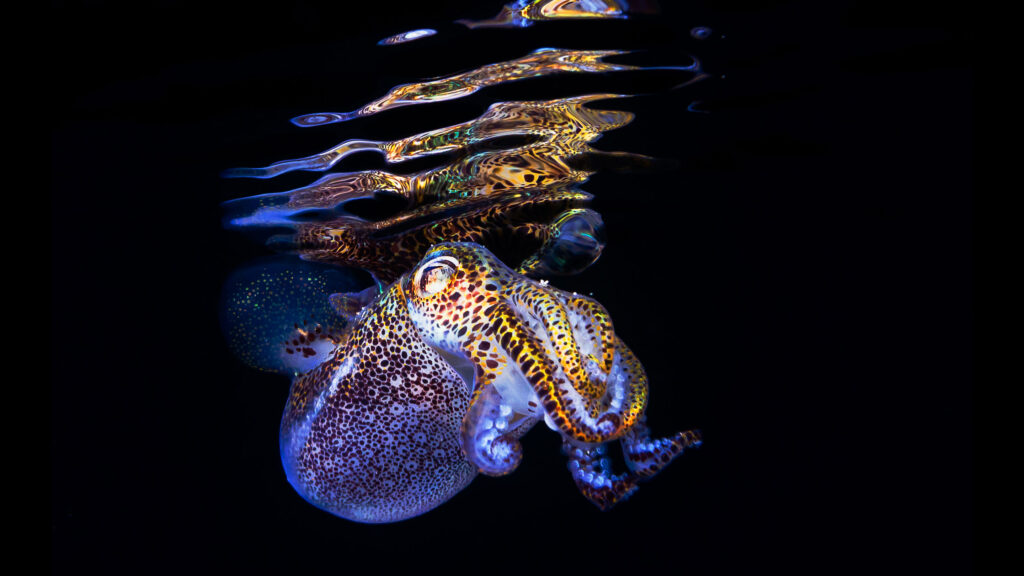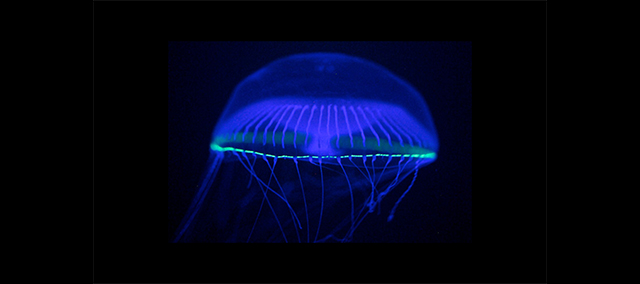
Bioluminescence is light produced by a chemical reaction within a living organism. Bioluminescence is a type of chemiluminescence, which is simply the term for a chemical reaction where light is produced. (Bioluminescence is chemiluminescence that takes place inside a living organism.) Bioluminescence is a “cold light.”
Cold light means less than 20% of the light generates thermal radiation, or heat. Most bioluminescent organisms are found in the ocean. These bioluminescent marine species include fish, bacteria, and jellies. Some bioluminescent organisms, including fireflies and fungi, are found on land. There are almost no bioluminescent organisms native to freshwater habitats.
The chemical reaction that results in bioluminescence requires two unique chemicals: luciferin and either luciferase or photoprotein. Luciferin is the compound that actually produces light.
In a chemical reaction, luciferin is called the substrate.
The bioluminescent color (yellow in fireflies, greenish in lanternfish) is a result of the arrangement of luciferin molecules.
Some bioluminescent organisms produce (synthesize) luciferin on their own. Dinoflagellates, for instance, bioluminesce in a bluish-green color.

Bioluminescent dinoflagellates are a type of plankton—tiny marine organisms that can sometimes cause the surface of the ocean to sparkle at night. Some bioluminescent organisms do not synthesize luciferin. Instead, they absorb it through other organisms, either as food or in a symbiotic relationship. Some species of midshipman fish, for instance, obtain luciferin through the “seed shrimp” they consume. Many marine animals, such as squid, house bioluminescent bacteria in their light organs.

The bacteria and squid have a symbiotic relationship.
Luciferase is an enzyme. An enzyme is a chemical (called a catalyst) that interacts with a substrate to affect the rate of a chemical reaction. The interaction of the luciferase with oxidized (oxygen-added) luciferin creates a byproduct, called oxyluciferin.
More importantly, the chemical reaction creates light.
Bioluminescent dinoflagellates produce light using a luciferin- luciferase reaction. The luciferase found in dinoflagellates is related to the green chemical chlorophyll found in plants. Bioluminescent dinoflagellate ecosystems are rare, mostly forming in warm-water lagoons with narrow openings to the open sea.
Bioluminescent dinoflagellates gather in these lagoons or bays,
and the narrow opening prevents them from escaping.
The whole lagoon can be illuminated at night.
Biologists identified a new bioluminescent dinoflagellate ecosystem in the Humacao Natural Reserve, Puerto Rico, in 2010. Most bioluminescent reactions involve luciferin and luciferase.
Some reactions, however, do not involve an enzyme (luciferase). These reactions involve a chemical called a photoprotein. Photoproteins combine with luciferins and oxygen, but need another agent, often an ion of the element calcium, to produce light. Photoproteins were only recently identified, and biologists and chemists are still studying their unusual chemical properties. Photoproteins were first studied in bioluminescent crystal jellies found off the west coast of North America.

The photoprotein in crystal jellies is called “green fluorescent protein” or GFP.
Bioluminescence is not the same thing as fluorescence.
Florescence does not involve a chemical reaction. In fluorescence, a stimulating light is absorbed and re-emitted. The fluorescing light is only visible in the presence of the stimulating light.
The ink used in highlighter pens is fluorescent. Phosphorescence is similar to florescence, except the phosphorescent light is able to re-emit light for much longer periods of time.
Glow-in-the-dark stickers are phosphorescent.
If you want to support this Research please go to the shopping page and look for a nice photograph you want to buy, all the money will go into the research.
if you would like to make a donation for the Research we do please go to paypal.me/nir1000